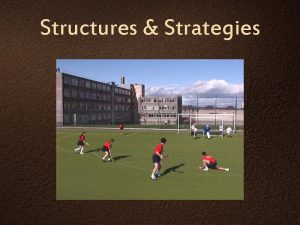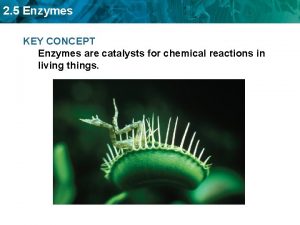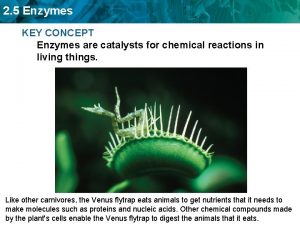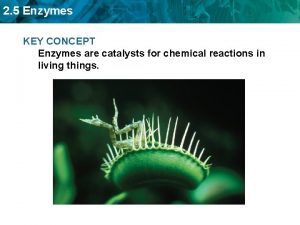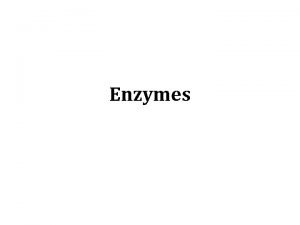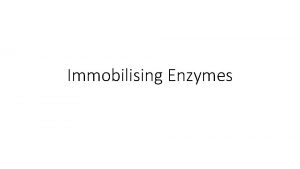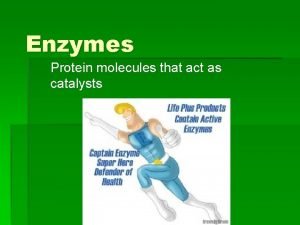2 5 Enzymes KEY CONCEPT Enzymes are catalysts








- Slides: 8

2. 5 Enzymes KEY CONCEPT Enzymes are catalysts for chemical reactions in living things. Like other carnivores, the Venus flytrap eats animals to get nutrients that it needs to make molecules such as proteins and nucleic acids. Other chemical compounds made by the plant's cells enable the Venus flytrap to digest the animals that it eats.

2. 5 Enzymes A catalyst lowers activation energy. • Catalysts are substances that speed up chemical reactions. – decrease activation energy – increase reaction rate

2. 5 Enzymes allow chemical reactions to occur under tightly controlled conditions. • Enzymes are catalysts in living things. – Enzymes are needed for almost all processes. – Most enzymes are proteins. Fig. This micrograph shows a pathogen after it has been captured. Once inside a white blood cell, enzymes are used to destroy the pathogen. (colored TEM; magnification 11, 000 X)

2. 5 Enzymes • Disruptions in internal conditions can prevent enzymes from functioning. – Enzymes function best in a small range of conditions. – Changes in concentrations, temperature and p. H can break hydrogen bonds (denature) causing enzymes not to work properly. Apply: What is the relationship between homeostasis and enzymes?

2. 5 Enzymes

2. 5 Enzymes • An enzyme’s structure allows only certain reactants to bind to the enzyme. • An enzyme’s function depends on its structure. – substrates – active site substrates (reactants) enzyme Substrates bind to an enzyme at certain places called active sites.

2. 5 Enzymes • The lock-and-key model (inducible fit model) helps illustrate how enzymes function. – substrates brought together – bonds in substrates weakened 1. Substrates bind to an enzyme at certain places called active sites. 2. Enzyme Substrate Complex - The enzyme brings substrates together and weakens their bonds. 3. The catalyzed reaction forms a product that is released from the enzyme. Apply: How does the structure of an enzyme affect its function?

2. 5 Enzymes Which of these statements is TRUE? A. Enzymes can fit with any reactant. B. Enzymes can function in any condition. C. Enzymes increase activation energy needed for a chemical reaction. D. Enzymes increase the reaction rate of a chemical reaction.








